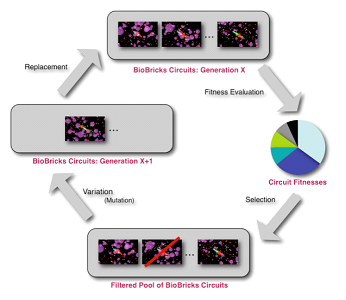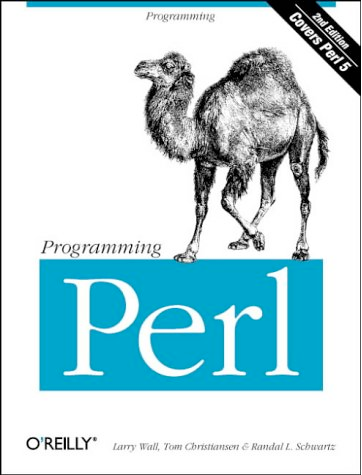Team:Calgary Software/Project
From 2008.igem.org

|
| Home | The Team | The Project | Modeling | Notebook |
|---|
| Evolutionary Algorithm | Data Retrieval | Modeling | Graphical User Interface |
|---|
Contents |
Introduction
We use evolutionary and genetic strategies, which are useful modeling methods, especially when coupled with agent-based designs. We created EvoGEM, a design that is based on the registry of genetic parts provided by the iGEM competition.
This design uses the paradigm of evolution to select efficient designs and produce a product or output that is generated independently by the system. EvoGEM uses the strategies of genetics and evolution to simulate an environment inside of a prokaryotic cell. This entails various events and structures that are present inside of the organism, such as:
- RNA polymerase - messenger-RNA - ribosomes - transcription and translation.
The program assembles generations from a selection of parts - retrieved from the iGEM registry - and creates genetic circuits. The circuits proliferate in each generation, and the best possible combination of parts is selected. Eventually, the best circuit is obtained from the system and a desired functionality is returned. The powerful agent-based logic allows for minimal assumptions about the behavior of the system, when coupled with the empirically proven evolutionary design, creates a superb system that is able to both simulate and develop iGEM circuits.EWe presented EvoGEM during the 2007 iGEM Jamboree, where it sparked a lot of interest amongst the different teams. This summer, our team has expanded EvoGEM by: - improving EvoGEM's fitness function. - introducing more complex pattern recognition. - testing the system under a much larger search space. Our goal was to create a system sophisticated enough to rebuild working designs from previous years' teams' projects, as well as intelligent enough to simulate successes and failures of working and non-working systems, respectively. We achieved our goals by: - building Perl scripts that support EvoGEM's requirements of a flat file registry - creating an Objective-C based graphical user interface (GUI) in order to make the software-user interaction easy - developing the EvoGEM code to include the behaviors specified before, and create a simulation of the processes in the cell such as transcription and translation.
Evolutionary Algorithm
Evolution involves the changes of inherited traits in a population from successive generations, one to another. Genetic information is carried through each generation and certain characteristics are expressed. Mutation enables manipulation of these traits as well as genetic recombination. Evolution is the result from the heritable traits becoming more prevalent or rare.
Agent-based modeling is a computational method of replicating the behavior and interaction of individuals within a network such that their overall effect on the system can be observed. This involves many different aspects, including game theory, evolutionary programming, complex, systems, and emergence. Multiple agents are simulated throughout an environment to emulate and hypothesize the actions of complex phenomena. Refer to Evolutionary Algorithm page for more details.
Data Retrieval and Storage
Modeling
Graphical User Interface
| Evolutionary Algorithm | Data Retrieval | Modeling | Graphical User Interface |
|---|
| Home | The Team | The Project | Modeling | Notebook |
|---|
 "
"


